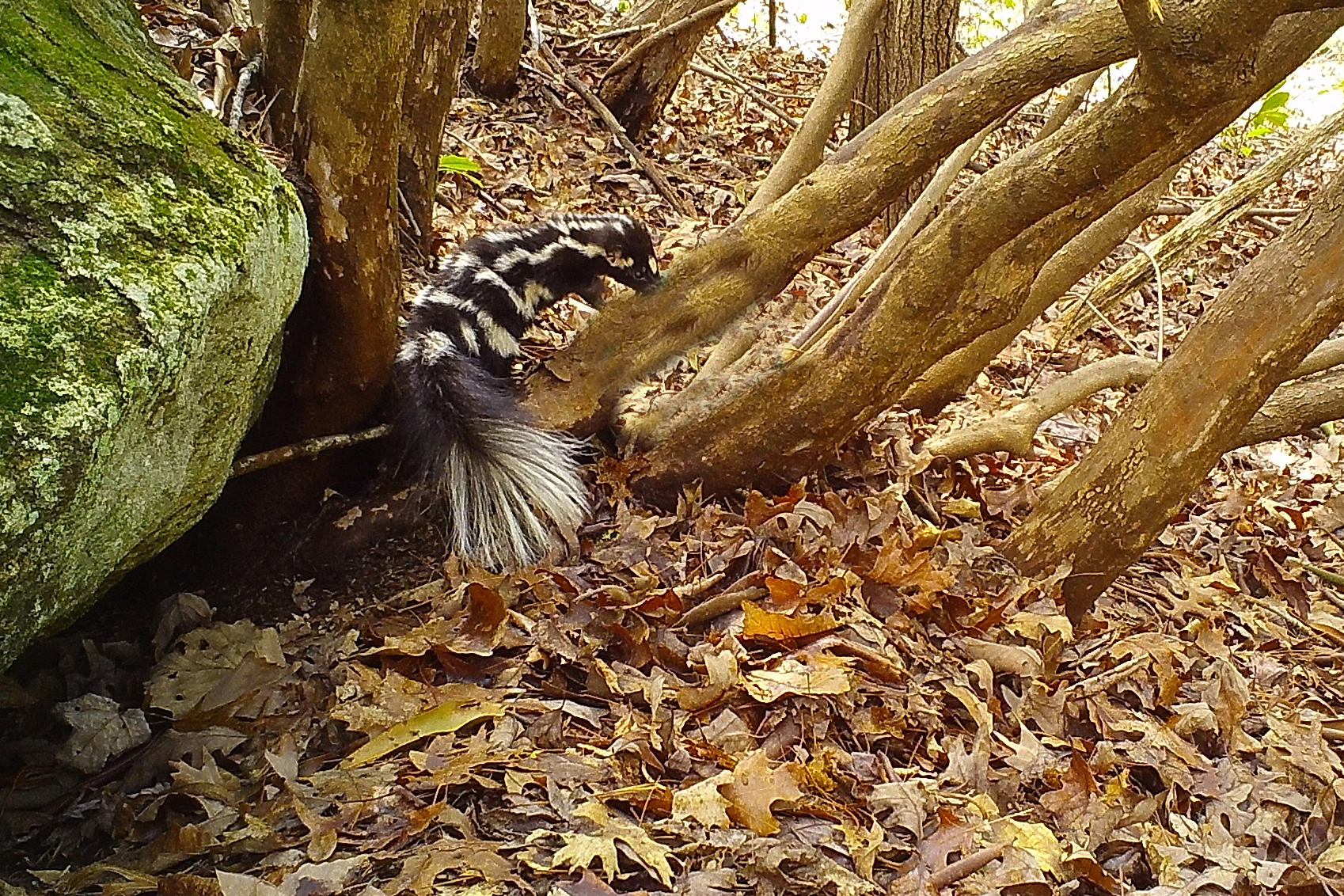|
| Distribution |
In NC, it is strictly limited to the mountains, where it occurs from VA to SC and GA; there are apparently no records from below the Blue Ridge Escarpment, except for a recent sighting in Surry County just west of I-77 in the foothills. However, it has a wide altitudinal range in the mountains, though apparently favors the higher elevations.
Occurs throughout the central portion of the continent, eastward to PA and southward into FL. However, it is generally absent in the Piedmont and Atlantic Coastal Plain of most states. |
| Abundance |
The species is not common within its fairly large range, and in NC it is now generally rare to uncommon, and likely is declining. Lee et al. (1982) found it widely distributed, and "relatively common" in certain habitats. In recent decades, records have been slow to accumulate, and it seems to be less numerous now than in the early 1980's. However, wildlife cameras have added quite a few recent records in the past few years -- not necessarily signaling a population increase, but at least there are now better ways of "observing" nocturnal animals than in earlier years. Many of the wildlife camera photos have been posted to the iNaturalist website, though there is a clustering of them in Haywood County (and no photos north of that county). Thus, it is likely rarest in the mountains in our northern counties. Alan Cameron put out an array of 74 cameras traps in 2018 in the Dupont State Recreational Forest in Transylvania and Henderson counties and documented Eastern Spotted Skunks at 60 of those sites, suggesting a robust population in the area. In April, 2020 the population began to crash due to an outbreak of canine distemper, and all or nearly all of the resident animals perished. The population has apparently not recovered significantly since then. |
| Seasonal Occurrence |
Occurs above ground-year round and presumably does not show altitudinal changes. |
| Habitat |
This species favors a mix of forests and fields, especially where the forests are rocky or have other den sites -- as does the Striped Skunk (in a different genus). Hardwood or mixed forests are probably favored over coniferous ones. Where there are cliffs or talus slopes, the species might be more numerous than elsewhere. The species also occurs around sheds, barns, and other structures, as long as there are denning places. |
| Behavior |
The species is strictly nocturnal, and thus is seldom seen (except as roadkills). |
| Comments |
The relative scarcity of recent records has sparked the N.C. Natural Heritage Program to track the species as Significantly Rare, starting in 2012. One biologist remarked that ever since Coyotes have been seen in his local area in Buncombe County in the past 5-10 years, sightings of Spotted Skunks have markedly declined. Thus, one can surmise that the great increase of Coyotes across the mountain region has sparked this skunk's decline, as skunks are preyed upon by these canines. Thankfully, the considerable usage of fixed wildlife cameras has captured a number of recent photos and videos of this species, and that program has moved the State Rank to a less rare S3, though still keeping records for it. |
| Origin |
Native |
| NC List |
Official |
 State Rank State Rank |
S3 |
 State Status State Status |
SR |
 Global Rank Global Rank |
G4 |
| Federal Status |
|
| subspecies |
Spilogale putorius putorius |
| other_comName |
Spotted Skunk |
| synonym |
|



